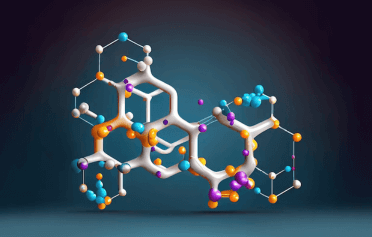Question
a.
True
b.
False
c.
May be True or False
d.
Can't say
Posted under Enzyme Technology
Interact with the Community - Share Your Thoughts
Uncertain About the Answer? Seek Clarification Here.
Understand the Explanation? Include it Here.
Q. Calorimetric biosensors represent the most generally applicable type of biosensor.
Similar Questions
Explore Relevant Multiple Choice Questions (MCQs)
Q. In calorimetric biosensor, the temperature changes are measured by means of _________
View solution
Q. Cholesterol: Cholesterol oxidase:: Esters: ______________
View solution
Q. Trypsin: Peptides:: Amylase: ____________
View solution
Q. Which of the following enzyme catalyzes uric acid?
View solution
Q. The relative decrease in the electrical resistance of the thermistor is proportional to the increase in temperature.
View solution
Q. Which of these is not true for thermistors?
View solution
Q. For measuring using calorimetric biosensors, the sensitivity of the glucose analysis using glucose oxidase may be doubled by the co-immobilization of _____________
View solution
Q. An extreme case of amplifying sensitivity for the determination of ADP does not involve co-immobilization which of the following enzyme?
View solution
Q. Potentiometric biosensors uses _______________ in order to transduce the biological reaction into an electrical signal.
View solution
Q. Which of this is not true for ion-selective electrode?
View solution
Q. Which of these is not an ion-selective electrode?
View solution
Q. ______________ is one in which the sensing element is a very thin hydrated glass membrane.
View solution
Q. Which of the following ion-selective electrode consist of gas permeable membrane?
View solution
Q. ____________ is one in which has a thin membrane of a specific ion conductor made from a mixture of silver sulphide and a silver halide.
View solution
Q. What does ‘X’ represent in the following reaction?
Penicillin \(\underset{X}{\rightarrow}\) Penicilloic acid + H⁺
View solution
Q. What does ‘Y’ represent in the following reaction?
Amygdalin + 2H₂O \(\underset{X}{\rightarrow}\) 2 Glucose + benzaldehyde + H⁺ + CN⁻
View solution
Q. Which of the following biosensors function by the production of a current when a potential is applied between two electrodes?
View solution
Q. The simplest amperometric biosensor is ____________
View solution
Q. The following reaction occurs at __________
4Ag⁰ + 4Cl⁻ → 4AgCl + 4e⁻
View solution
Q. Where does the following reaction occur?
O₂ + 4H⁺ + 4e⁻ → 2H₂O
View solution
Recommended Subjects
Are you eager to expand your knowledge beyond Enzyme Technology? We've handpicked a range of related categories that you might find intriguing.
Click on the categories below to discover a wealth of MCQs and enrich your understanding of various subjects. Happy exploring!








